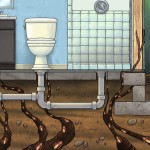The Financial Impact of Termites
For most of us, our homes are the largest financial investment we’ll ever make in our lifetime. Termites can destroy that investment by causing major damage before we even know they’ve invaded our homes. According to the National Pest Management Association (NPMA), it is estimated that termites cause more than $5 billion in property damage each year. Spring marks Subterranean termite swarm season, which is when you’re likely to see termites. It’s important to note that even though spring is essentially over and it’s 
Here are several tips to help you identify termite activity in your home:
- Termite Wings: Often present after a swarm, wings are typically found in small piles near window ledges or other light sources.
- Mud Tubes: Made of particles of soil, wood and debris, these allow subterranean termites to reach food sources above ground level.
- Damaged Wood: This can include wood that sounds “hollow” when it is tapped with the handle of a screwdriver or wood that is soft when probed with a sharp object.
- Small Holes or Ripples in Drywall: When termites damage wood within your home, they often create tiny holes in the drywall. Extensive damage to the wood can make the drywall look rippled.
- Pellets: Drywood termites excrete pellets that are kicked out of holes. These pellets often accumulate in piles on window sills, baseboards and under wooden objects.
Don’t wait until it’s too late to protect your home from termites. The financial impact can be devastating. CLICK HERE to contact us for a free, thorough inspection of your home and learn more about your choices for termite protection.